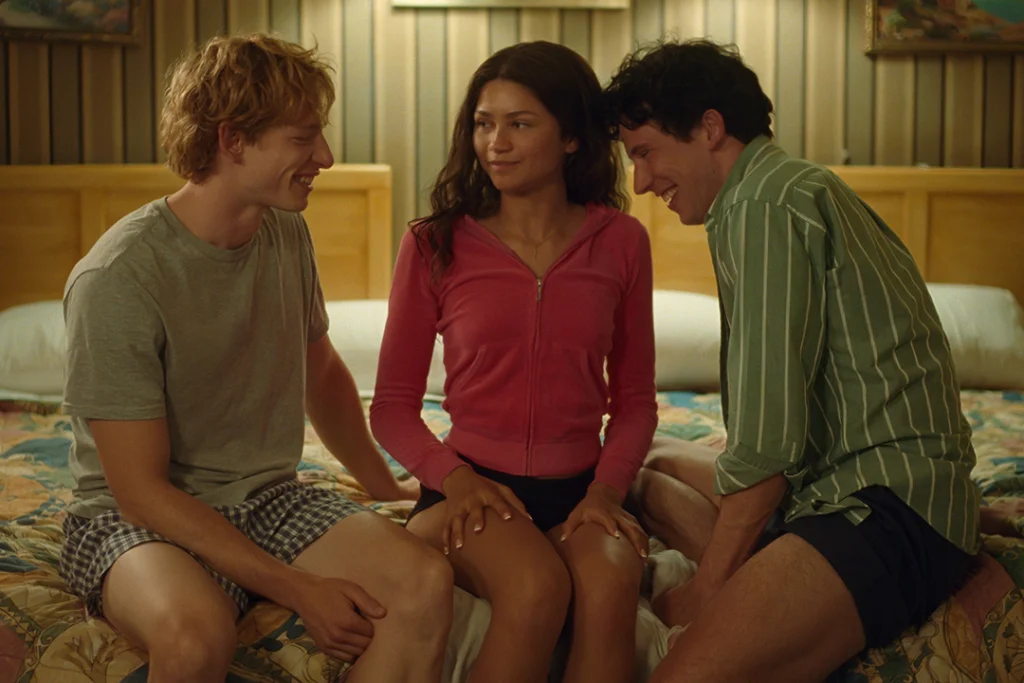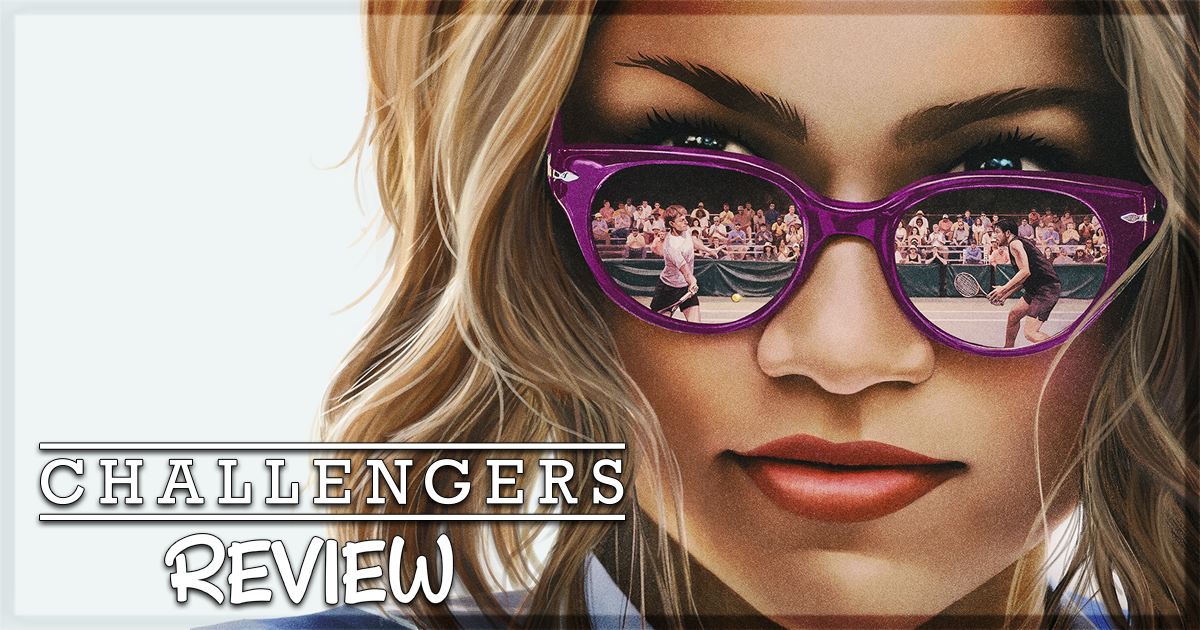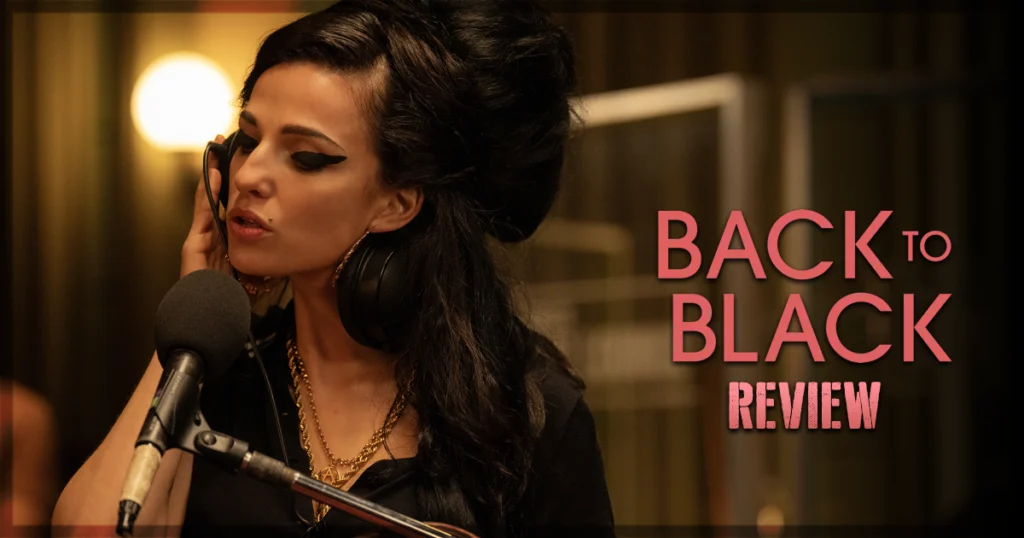Challengers was one of the most anticipated films of 2023, but it was postponed to the following year due to the SAG-AFTRA strike. However, the enormous anticipation for Luca Guadagnino’s new movie (Call Me by Your Name, Suspiria, Bones and All) never faded, especially considering it stars one of Hollywood’s biggest young celebrities of today, Zendaya (Dune: Part Two). These factors greatly contribute to the high expectations. Additionally, as a fan and player of tennis outside of this virtual world, having this sport as the backdrop for the narrative adds an extra layer of entertainment for me.
Justin Kuritzkes’ feature screenplay debut follows the story of a professional tennis champion, Art Donaldson (Mike Faist), who plans his comeback to the top form that earned him Grand Slams in a second-tier professional circuit tournament – the ATP Challengers Tour – with the help of his wife, Tashi Duncan (Zendaya), herself a former tennis prodigy who was forced to retire due to a knee injury. In New Rochelle, Art faces Patrick Zweig (Josh O’Connor), his former best friend and… his wife’s ex-boyfriend.
Luca Guadagnino: Master of Sumptuous Filmmaking
Guadagnino is known for his sumptuous visuals, the emotional depth of his characters, the beauty and sensuality of all his shots, and, above all, his incredibly detailed attention to sensory stimuli. Challengers is a perfect example of his meticulous filmmaking, where literally everything has some meaning or purpose. Whether it’s a tiny adjustment in a player’s service motion, a casual remark in a heated moment, or a minimalist facial expression, there’s no scene or even a single image without some type of information for the audience.
Challengers is a narrative driven by its theme of love as competition. “Are we talking about tennis?”…”We’re always talking about tennis.” This particular question-answer is repeated more than once throughout the movie, and in the end, the first question that comes to mind is whether, at any point in the film, the characters were *truly* talking about tennis. The metaphorical weight of all interactions within the love triangle is undeniably impactful, serving as a valuable ingredient for the exponential growth of sexual tension over the runtime, both in simple conversations in a cafeteria and in intense rallies on the court.
A Film Beyond Tennis
Challengers is much more than tennis. Like its title, the character arcs, including their motivations, dilemmas, and desires, have an obvious superficial connection to the sport, but they possess numerous personal and thematic layers intertwined. One can replace tennis with any other individual sport, and the narrative would remain practically identical – there are always technical adjustments regarding the respective calendar and competitive structure, of course.
The dynamics between the trio of protagonists are the predictable highlight of Challengers. The constant twists in the relationships between Tashi, Art, and Patrick allow for a captivating level of unpredictability, but it’s the effervescent chemistry between Zendaya, O’Connor (The Crown), and Faist (The Bikeriders) that turns the cinema into a real furnace, such is the passionate ardor with which the actors embody their characters and, mainly, the extremely sexy, titillating sequences between them – here’s a warning for more sensitive viewers regarding nudity and the like.

Zendaya’s skill in Challengers
It’s hard to imagine an awards season where Zendaya isn’t one of the main contenders, given the complete commitment with which she delivers her body and skill to portray Tashi, a woman who had everything to be the queen and owner of the sport but found herself relegated to being the “assistant” of the fantastic male champion while watching players she once annihilated in the past win the biggest tournaments in the world. Tashi’s warlike desire to win and play/see good tennis is her biggest motivation throughout Challengers and the reason she tries to live for Art, the success she always desired, as well as the frustration when the results aren’t as expected.
But this motivation is inherently personal. Tashi doesn’t simply want to see good tennis – for that, she could easily watch any match on the sport’s main tour. Challengers is about intimate human connections and how they turn something supposedly as beautiful and aphrodisiacal as love into a competition full of sweat, heavy breathing, violent shots, and, in the particular case of the central trio, an endless rally between Art and Patrick to win over Tashi.
The once best friends fight each other, but also *for* themselves. The sexual chemistry of Challengers doesn’t just come from Tashi-Art or Tashi-Patrick, but also from Art-Patrick. Guadagnino uses all bits of time and space to literally glue the audience to these three relationships, with vibrant, tight close-ups during dialogues and rallies, just like in any other moment of the film.
Guadagnino also employs different narrative timelines with tremendous efficiency. Naturally, as someone who knows the sport inside out, a simple mention of a tournament or a small announcement on television is enough to place me on the Challengers‘ temporal continuum. But any viewer will easily follow the unfolding of events, not only because of the obvious connection between each period but also due to all the details the filmmaker applies to identify each time frame. Whether it’s through costumes, hairstyles, or even the tennis gear used, all departments contribute to a structurally understandable, thematically rich movie. Nevertheless, being knowledgeable about tennis has its pros and cons.
On one hand, I can follow Challengers without needing a second of narrative adjustment or processing. On the other hand, the tennis sequences are subject to greater scrutiny, and it’s genuinely difficult not to be distracted by the lack of synchronization between the players’ footwork and strokes with the frequently CGI-rendered ball – some rallies border on the ridiculous, but they demonstrate the tremendous versatility of Sayombhu Mukdeeprom’s (Thirteen Lives) cinematography accompanied by the electrifying score of Trent Reznor and Atticus Ross (Soul) – or to notice a post-production mistake involving the scoreboard of the match between Art and Patrick.
Still, in the end, that’s not the most important thing because, once again, Challengers isn’t a tennis story. The goal isn’t to architect incredibly realistic rallies but to capture the brutal intensity of an extremely physical sport, creating an impressively palpable metaphorical link with the powerfully dynamic relationships of the main trio. The last sequence of the film applies slow-motion as a tension and suspense device in a climax that will leave any viewer at the edge of their seat – although it risks losing that same audience with its potentially overly long scene – but once again, it’s not the beautiful shots that make that encounter a great tennis match, but the intimate closeness we have with the characters.
And now, I ask again: “Are we talking about tennis?” Or is Challengers a profound study of the intimate complexity of human nature? There’s a tennis saying that goes, “a ball 99% out is 100% in” – just a bit of the ball touching the lines of the court counts as valid. Well, one can argue that Guadagnino created a story that’s 99% about tennis… and 100% about everything but tennis.
Final Thoughts on Challengers
Challengers transcends the limits of its tennis-centric premise to delve deep into the complexities of human relationships and personal desires. Luca Guadagnino’s meticulous filmmaking and metaphoric storytelling, coupled with the stellar, fervorous performances of Zendaya, Josh O’Connor, and Mike Faist, propel viewers into a world where the lines between love and competition blur with tantalizing intensity, sexual tension, and an electrifying score. With its potent blend of passion, intimacy, narrative and character depth, the film never stops reminding us that the most captivating stories lie beyond the boundaries of the tennis court.
A-



